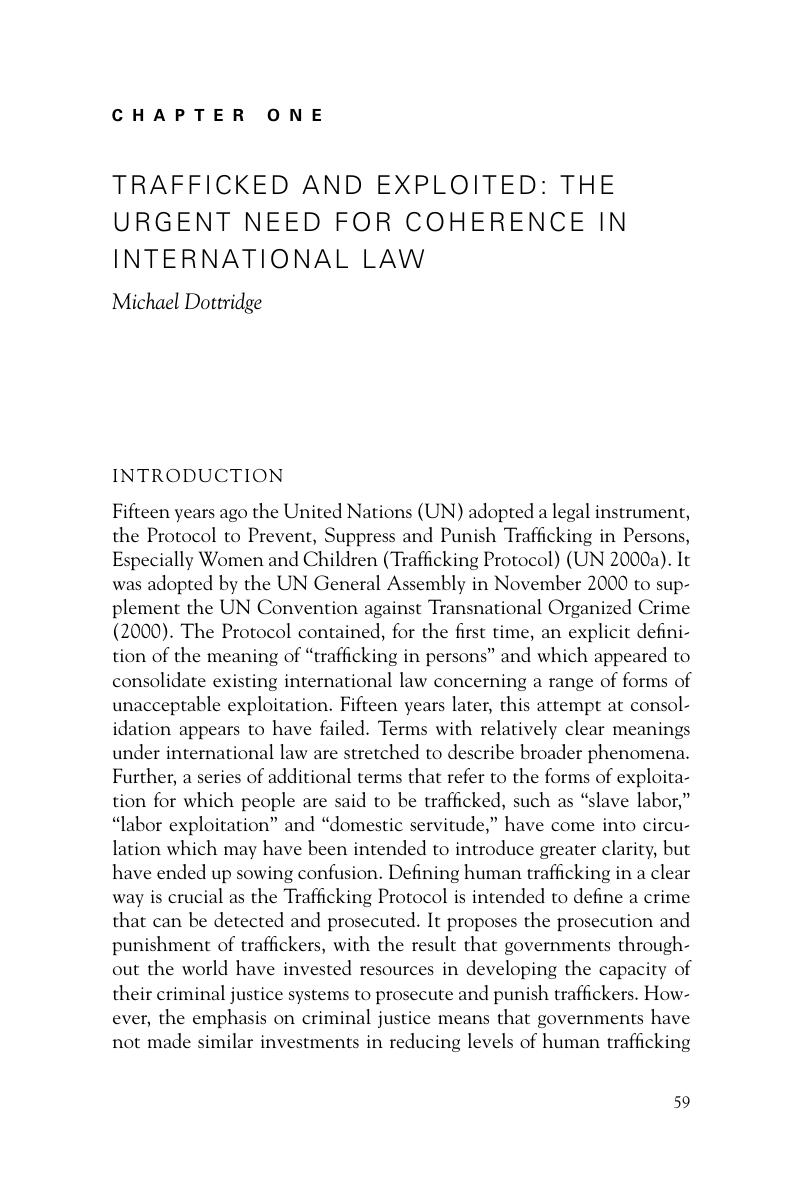Book contents
- Revisiting the Law and Governance of Trafficking, Forced Labor and Modern Slavery
- Cambridge Studies in Law and Society
- Revisiting the Law and Governance of Trafficking, Forced Labor and Modern Slavery
- Copyright page
- Contents
- List of Contributors
- Acknowledgements
- From Sex Panic to Extreme Exploitation: Revisiting the Law and Governance of Human Trafficking
- Part I Revisiting the Text and Context of Article 3
- Chapter One Trafficked and Exploited: The Urgent Need for Coherence in International Law
- Chapter Two The International Legal Definition of “Trafficking in Persons”: Scope and Application
- Chapter Three Contemporary Debt Bondage, “Self-Exploitation,” and the Limits of the Trafficking Definition
- Chapter Four Subjectivity of Coercion: Workers' Experiences with Trafficking in the United States
- Part II Anti-Trafficking Law: A Legal Realist Critique
- Part III Trafficking and New Forms of Governance
- Part IV New Directions in Anti-Trafficking Law and Policy: The Role of the ILO
- Part V Rethinking Trafficking through Migration Policy
- Appendix Protocol to Prevent, Suppress and Punish Trafficking in Persons, Especially Women and Children, Supplementing the United Nations Convention Against Transnational Organized Crime
- Index
- Cambridge Studies in Law and Society
- References
Chapter One - Trafficked and Exploited: The Urgent Need for Coherence in International Law
from Part I - Revisiting the Text and Context of Article 3
Published online by Cambridge University Press: 13 July 2017
- Revisiting the Law and Governance of Trafficking, Forced Labor and Modern Slavery
- Cambridge Studies in Law and Society
- Revisiting the Law and Governance of Trafficking, Forced Labor and Modern Slavery
- Copyright page
- Contents
- List of Contributors
- Acknowledgements
- From Sex Panic to Extreme Exploitation: Revisiting the Law and Governance of Human Trafficking
- Part I Revisiting the Text and Context of Article 3
- Chapter One Trafficked and Exploited: The Urgent Need for Coherence in International Law
- Chapter Two The International Legal Definition of “Trafficking in Persons”: Scope and Application
- Chapter Three Contemporary Debt Bondage, “Self-Exploitation,” and the Limits of the Trafficking Definition
- Chapter Four Subjectivity of Coercion: Workers' Experiences with Trafficking in the United States
- Part II Anti-Trafficking Law: A Legal Realist Critique
- Part III Trafficking and New Forms of Governance
- Part IV New Directions in Anti-Trafficking Law and Policy: The Role of the ILO
- Part V Rethinking Trafficking through Migration Policy
- Appendix Protocol to Prevent, Suppress and Punish Trafficking in Persons, Especially Women and Children, Supplementing the United Nations Convention Against Transnational Organized Crime
- Index
- Cambridge Studies in Law and Society
- References
Summary

- Type
- Chapter
- Information
- Publisher: Cambridge University PressPrint publication year: 2017
References
- 8
- Cited by



